Shopping Cart
Remove All Your shopping cart is currently empty
Your shopping cart is currently empty
Anti-PARP1 Antibody (4Z18) is a Rabbit antibody targeting PARP1. Anti-PARP1 Antibody (4Z18) can be used in FCM,ICC/IF,IHC,WB.
| Pack Size | Price | USA Warehouse | Global Warehouse | Quantity |
|---|---|---|---|---|
| 50 μL | $296 | 7-10 days | 7-10 days | |
| 100 μL | $498 | 7-10 days | 7-10 days |
| Description | Anti-PARP1 Antibody (4Z18) is a Rabbit antibody targeting PARP1. Anti-PARP1 Antibody (4Z18) can be used in FCM,ICC/IF,IHC,WB. |
| Synonyms | PPOL, Poly-PARP, PARS, PARP-1, PARP, pADPRT-1, ARTD1, ADPRT1, ADPRT 1, ADPRT |
| Ig Type | IgG |
| Clone | 4Z18 |
| Reactivity | Human,Mouse,Rat |
| Verified Activity | 1. Western blot analysis of PARP on different lysates using anti-PARP antibody at 1/1,000 dilution. Positive control: Lane 1: A549, Lane 2: Jurkat, Lane 3: Hela. 2. Immunohistochemical analysis of paraffin-embedded human spleen tissue using anti-PARP antibody. Counter stained with hematoxylin. 3. Immunohistochemical analysis of paraffin-embedded mouse colon tissue using anti-PARP antibody. Counter stained with hematoxylin. 4. ICC staining PARP in Hela cells (green). The nuclear counter stain is DAPI (blue). Cells were fixed in paraformaldehyde, permeabilised with 0.25% Triton X100/PBS. 5. Flow cytometric analysis of Hela cells with PARP antibody at 1/50 dilution (red) compared with an unlabelled control (cells without incubation with primary antibody; black). Alexa Fluor 488-conjugated goat anti rabbit IgG was used as the secondary antibody. 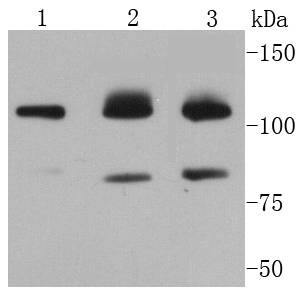 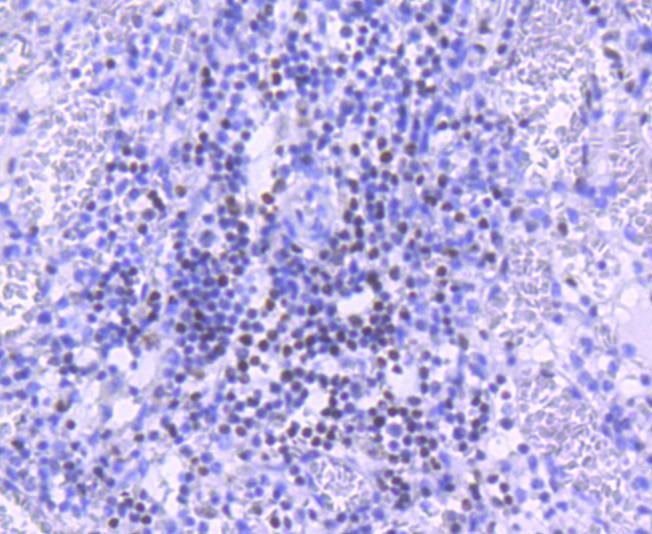 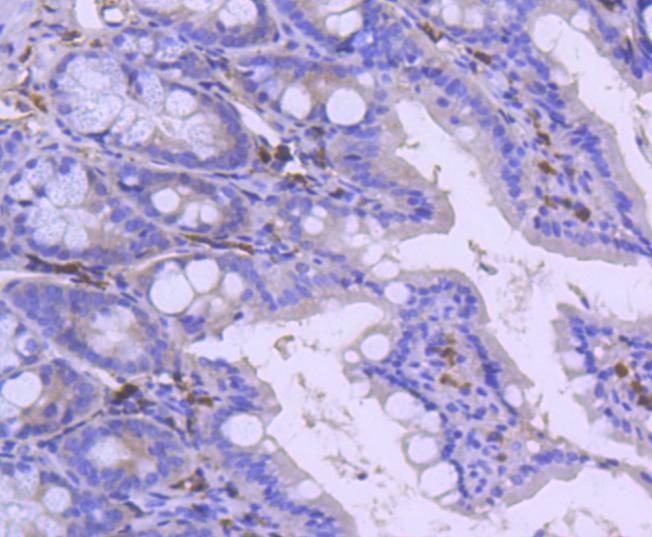 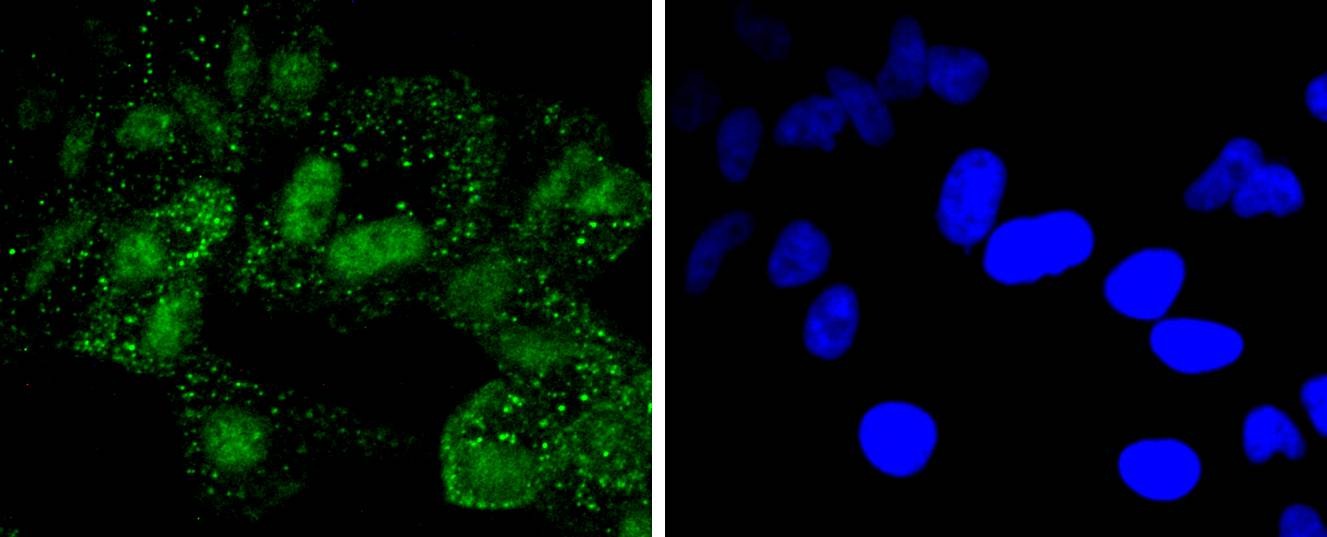 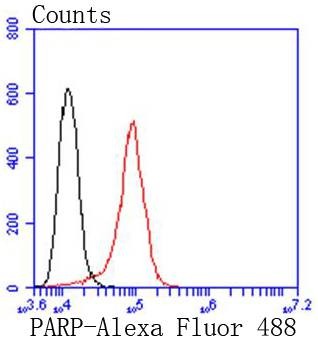 |
| Application | |
| Recommended Dose | WB: 1:1000; IHC: 1:50-200; ICC/IF: 1:50-200; FCM: 1:50-100 |
| Antibody Type | Monoclonal |
| Host Species | Rabbit |
| Construction | Recombinant Antibody |
| Purification | ProA affinity purified |
| Appearance | Liquid |
| Formulation | 1*TBS (pH7.4), 1%BSA, 40%Glycerol. Preservative: 0.05% Sodium Azide. |
| Research Background | PARP, a 116 kDa nuclear poly (ADP-ribose) polymerase, appears to be involved in DNA repair in response to environmental stress. This protein can be cleaved by many ICE-like caspases in vitro and is one of the main cleavage targets of caspase-3 in vivo. In human PARP, the cleavage occurs between Asp214 and Gly215, which separates the PARP amino-terminal DNA binding domain (24 kDa) from the carboxy-terminal catalytic domain (89 kDa). PARP helps cells to maintain their viability; cleavage of PARP facilitates cellular disassembly and serves as a marker of cells undergoing apoptosis. |
| Conjucates | Unconjugated |
| Immunogen | Recombinant Protein |
| Uniprot ID |
| Molecular Weight | Theoretical: 113/89 kDa. |
| Stability & Storage | Store at -20°C or -80°C for 12 months. Avoid repeated freeze-thaw cycles. |
| Transport | Shipping with blue ice. |
| Size | Quantity | Unit Price | Amount | Operation |
|---|

Copyright © 2015-2025 TargetMol Chemicals Inc. All Rights Reserved.